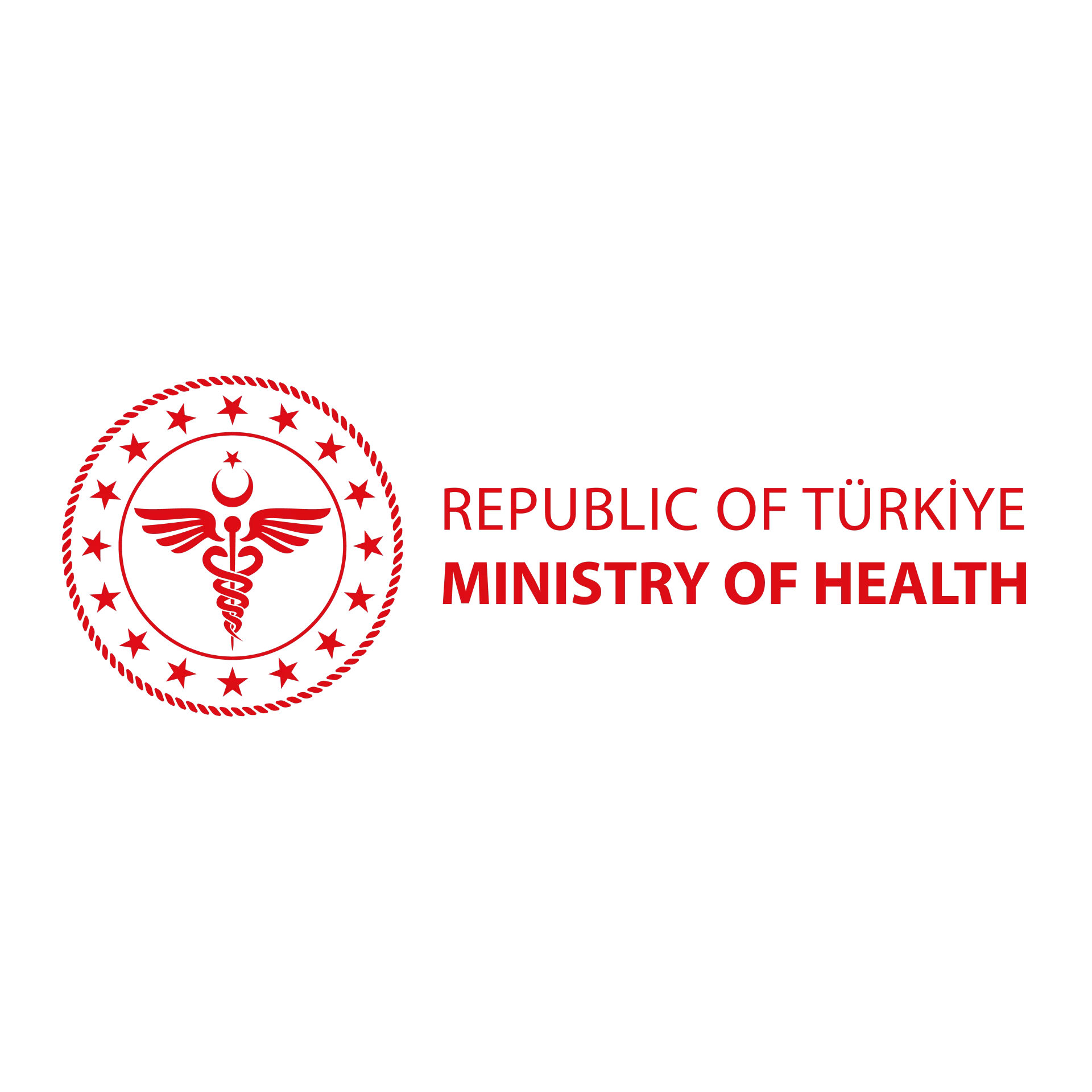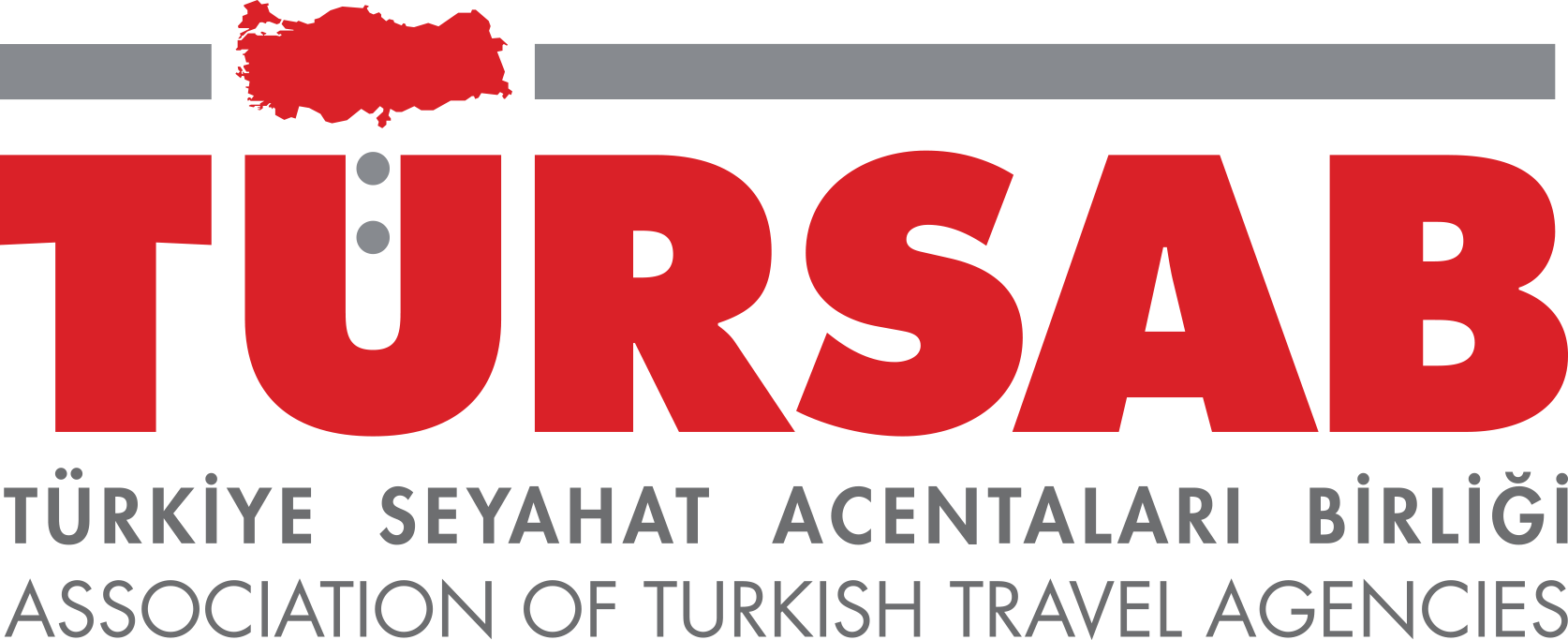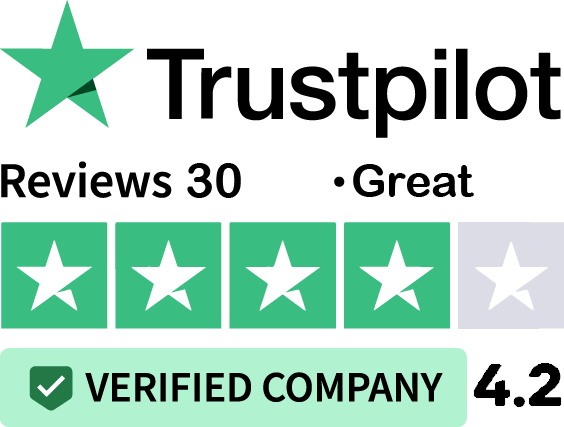 What is Femur Lengthening?
What is Femur Lengthening?
Femur lengthening, also known as limb lengthening, is a surgical procedure used to increase the length of the femur bone in the leg.
Lengthening over nail (LON) and Precice lengthening are two different techniques used in limb lengthening procedures.
The procedure for LON typically involves the use of an external fixator device, which consists of metal rings or frames attached to the bones using pins. The procedure for Precice is similar but involves specialized telescopic intramedullary nail called the Precice nail. The fixator or Precice nail is adjusted gradually over a period of weeks or months to apply controlled traction and stimulate bone growth in the gap between bone ends.
Daily lengthening dosage is 1mm per day, but it may vary depending on patient’s bone regeneration, condition of soft issues and doctor’s recommendations.
Femur Lengthening in Turkey
In Turkey, femur leg lengthening procedures are conducted by orthopaedic surgeons who specialize in limb lengthening surgeries.
Before undergoing any medical procedure in a foreign country, individuals should thoroughly research the chosen healthcare provider, including their credentials, success rates, and patient reviews. Seeking guidance from medical travel agencies or consulting with international patient coordinators can also help streamline the process and provide support throughout the medical journey.
In conclusion, femur lengthening in Turkey combines advanced medical techniques with the allure of medical tourism. Patients can expect quality healthcare services and the opportunity to explore Turkey’s rich cultural heritage while undergoing femur lengthening procedures.
How is Femur Lengthening Surgery performed?
We working with two different methods:
Precice Method and LON Method (Lengthening Over Nail) The procedure for LON typically involves the use of an external fixator device, which consists of metal rings or frames attached to the bones using pins. The procedure for Precise is similar but involves a specialised telescopic intramedullary nail called the Precice nail. The fixator or Precice nail is adjusted gradually over a period of weeks or months to apply controlled traction and stimulate bone growth in the gap between bone ends.
Femur Lengthening Surgery Cost in Turkey
The cost of limb lengthening surgery in Turkey may fluctuate based on various factors such as the specific surgical procedure, the duration of the operation, and the particular medical facility chosen. The cost does not change according to which segment you will lengthen or how many cm you will lengthen. There is no price change as femur lengthening cost or tibia lengthening cost. Limb lengthening cost varies in two ways, whether it is a single segment or two segments at the same time, as we call “quadrilateral” (both femur and both tibia bones at the same time)
After the decision is made, the price changes again according to the methods such as Precice 2 method or LON method.
Femur Lengthening Before and After
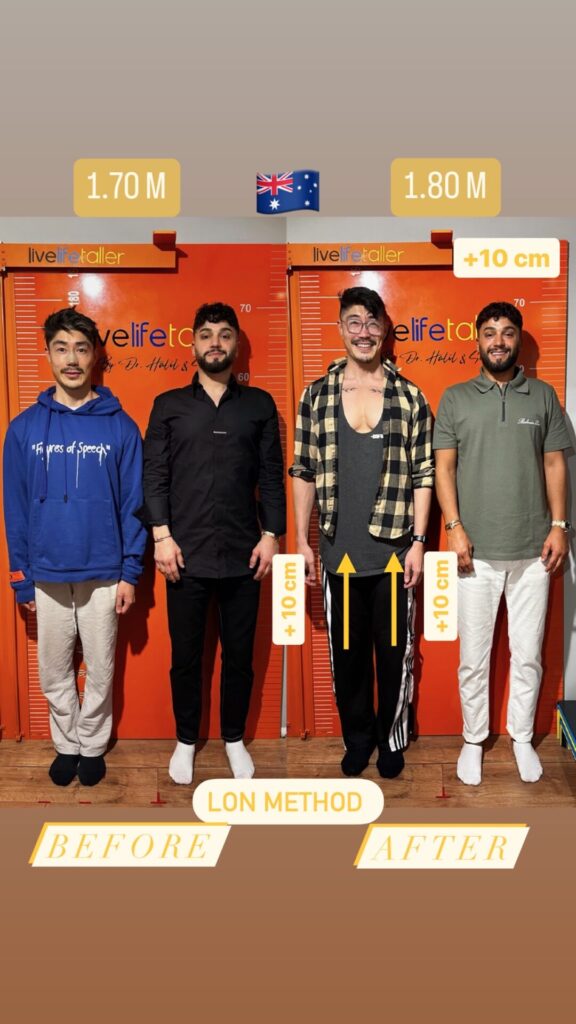
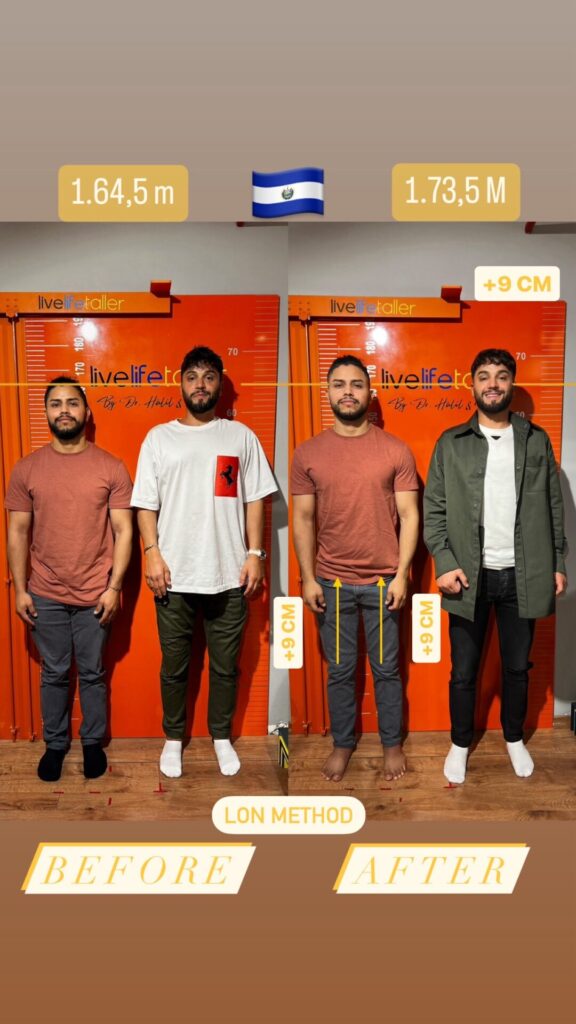
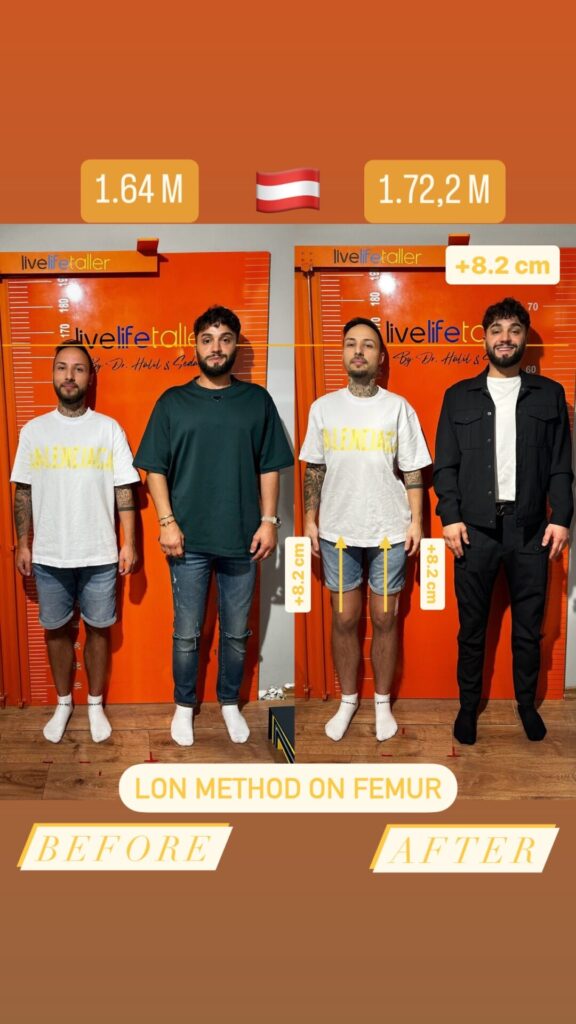
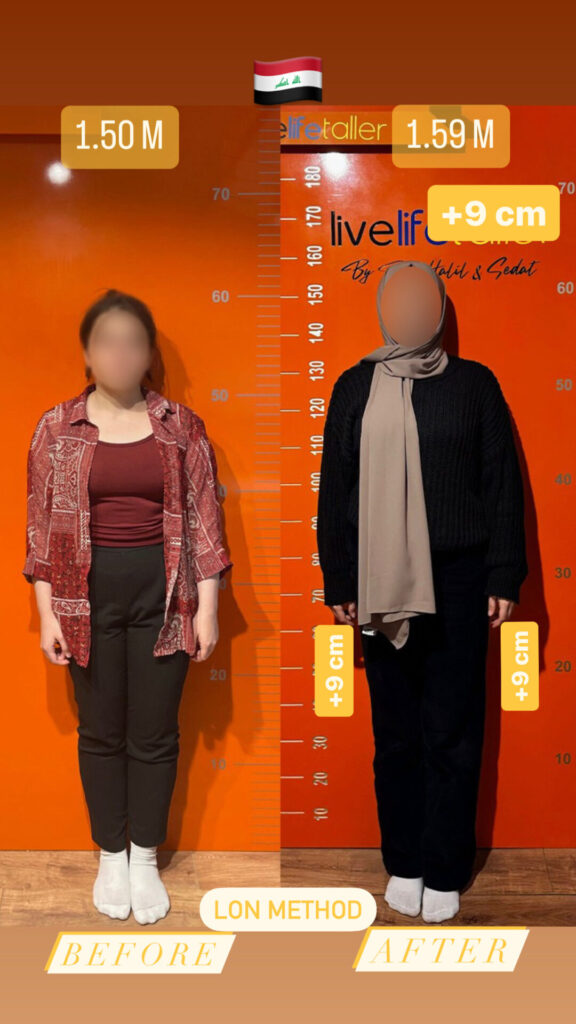
What are the stages of Femur Lengthening?
The stages of Femur Leg Lengthening typically involve a post-surgery period before actual lengthening begins, typically about five days post-surgery.
During the femur limb lengthening process, ongoing physical therapy and expert medical support are crucial. Once the femur lengthening phase is completed, the recovery phase starts.
After approximately 1-1.5 years, when the bone has fully healed, the intramedullary nail used in the surgery can be safely removed.
As for the potential increase in height through femur leg lengthening surgery, it varies based on the method used.
What is the Femur Lengthening Surgery procedure?
Femur lengthening surgery, also known as limb lengthening, is a complex orthopedic procedure designed to increase the length of the femur, the thigh bone.
1. Pre-operative Evaluation:
Before the surgery, the patient undergoes a thorough evaluation, including medical history, physical examination, and imaging studies (X-rays, CT scans, or MRI) to assess the extent of the limb length inequality and determine the appropriate surgical plan.
2. Anesthesia:
The surgery is performed under general anesthesia to ensure the patient is unconscious and pain-free during the procedure.
3. Incisions:
Small incisions are made near the knee and hip joints to access the femur bone. The precise location and number of incisions depend on the specific surgical technique employed by the orthopedic surgeon.
4. Osteotomy (Bone Cut):
The femur bone is carefully cut (osteotomy) at the predetermined location. The surgeon may use specialized tools, such as oscillating saws or circular saws, to make precise bone cuts.
5. Intramedullary Nail Insertion:
An intramedullary nail is inserted to the bone and fixed with the locking screws. If the method the patient chose is LON, the fixator must also be attached to the bone. The intramedullary nail provides stability and allows for controlled distraction of the bone.
6. Distraction Phase:
The distraction phase begins a few days after surgery. The patient turns a mechanism on the external fixator, or with using an ERC device for Precice nail, causing controlled separation of the bone segments. This stimulates the formation of new bone in the gap.
7. Monitoring:
Throughout the distraction phase, the patient undergoes regular follow-up appointments and imaging studies to monitor the progress of bone lengthening and ensure that the process is occurring at the desired rate.
8. Consolidation Phase:
Once the desired length is achieved, the distraction phase is stopped, and the bone segments are allowed to consolidate. During this phase, the bone gradually hardens, and the external fixator remains in place to provide support.
9. Removal of External Fixator:
After sufficient consolidation, the external fixator is removed in a separate surgical procedure. Physical therapy and rehabilitation follow to restore function and strength to the lengthened limb.
10. Post-operative Care:
Patients are closely monitored postoperatively to manage pain, prevent complications, and ensure proper bone healing. Physical therapy plays a crucial role in helping patients regain mobility and strength in the treated limb. It’s important to note that femur lengthening surgery is a complex and specialized procedure, and the specific details may vary based on the patient’s individual case and the surgeon’s approach. The decision to undergo femur lengthening should be made in consultation with an experienced orthopedic surgeon after a comprehensive evaluation of the patient’s condition.
11. Removal of Intramedullary Nail:
The intramedullary nail should be removed after the bone has completely healed.
FAQ
How many cm heights can be increased with Femur Lengthening surgery?
LON method:
- On the upper leg (femur): 8-10 cm
- On the lower leg (tibia): 6-8 cm
Precice 2 method:
- On the upper leg (femur): maximum 8 cm
- On the lower leg (tibia): maximum 6 cm
Who can have Femur Lengthening procedure?
Limb lengthening surgery may be considered for individuals with no existing health issues. The diseases are uncontrolled diabetes, cancer, bone disorders, skin diseases.
Can Femur Lengthening surgery be painful?
The surgical procedure itself generally doesn’t induce pain as the patient is under general anaesthesia. However, following the surgery, there might be a mild discomfort until the effects of the anaesthesia subside. It’s crucial to note that pain thresholds vary among individuals. Our team will be available at the hospital to ensure that any discomfort is kept to a minimum. The discomfort experienced during the lengthening process can be compared to muscle soreness. In the LON method, some patients complain about pain at the pin entry sites as well as skin pain.
How long is the Femur Lengthening recovery process?
The recovery process can vary from patient to patient. Generally, patients can walk without crutches after 1-3 months. However, this heavily relies on bone healing and muscle strength. Complete recovery may take between 6-12 months. Full participation in extremely strenuous sports activities should only occur once bone healing is complete. It’s important to note that each patient responds uniquely to treatment. While some might regain normal walking abilities sooner, others may require a bit more time. Recovery heavily depends on the type of procedure, individual body response, and adherence to rehabilitation guidelines.For a complete return to sports activities, patience and adherence to your doctor’s advice are crucial. Bone healing plays a pivotal role in resuming intense physical activities. Thoughtfully considering these factors can contribute to a smoother and more effective recovery.
What is the doctor’s follow-up process after Femur Lengthening surgery?
After the surgery, the patient starts lengthening approximately 5 days later. Following this, physiotherapy sessions commence, accompanied by doctor visits every 2 weeks, and X-rays taken every 10-15 days. These steps enable the doctor to measure the extent of the lengthening and provide an assessment. Once patients reach their targeted goal, the removal process takes place, initiating the subsequent recovery phase.
What is the age limit for Femur Lengthening surgery?
The procedure for lengthening limbs through surgery is a complex medical intervention that requires careful considerations. One crucial requirement for this procedure is that the patient has completed their growth phase to ensure that the surgery doesn’t interfere with natural growth. Typically, an experienced specialist, an endocrinologist, assesses this through various tests and analyses to determine the growth status. Moreover, it’s vital that the patient doesn’t have any serious illnesses or health conditions that could increase the risks associated with the procedure. Thorough medical evaluations and assessments are necessary to ensure the patient’s suitability for this operation. Usually, individuals undergoing limb lengthening surgery fall within the age range of 13 to 65 years. This broad span accommodates younger patients who may require corrections due to growth disorders or other medical reasons, as well as older patients seeking length adjustments for aesthetic or functional purposes. Overall, limb lengthening surgery demands a comprehensive evaluation of an individual’s health to ensure a safe and effective procedure. It’s essential that the surgery is performed by an experienced surgeon within a specialised medical setting to achieve optimal results and facilitate successful rehabilitation.
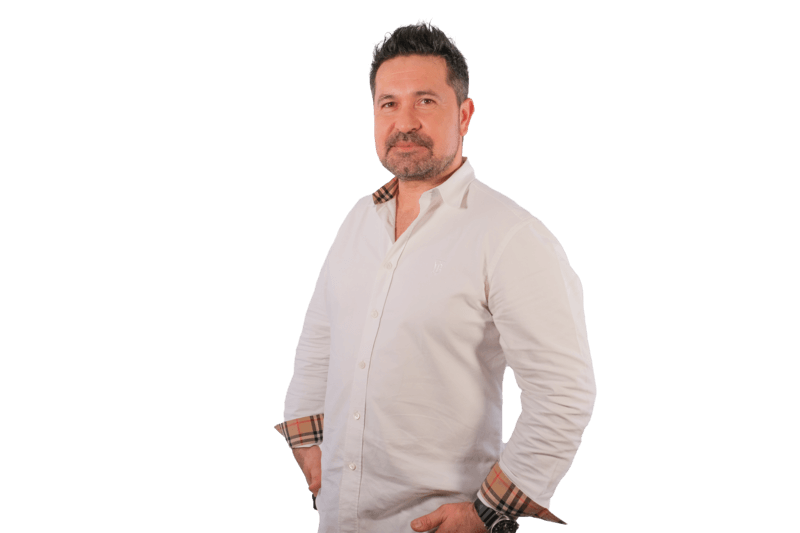
Orthopedic Surgeon and specialist in Limb Lengthening & Deformity Correction with over 14 years of experiences
Author Page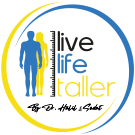
 What is Femur Lengthening?
What is Femur Lengthening?